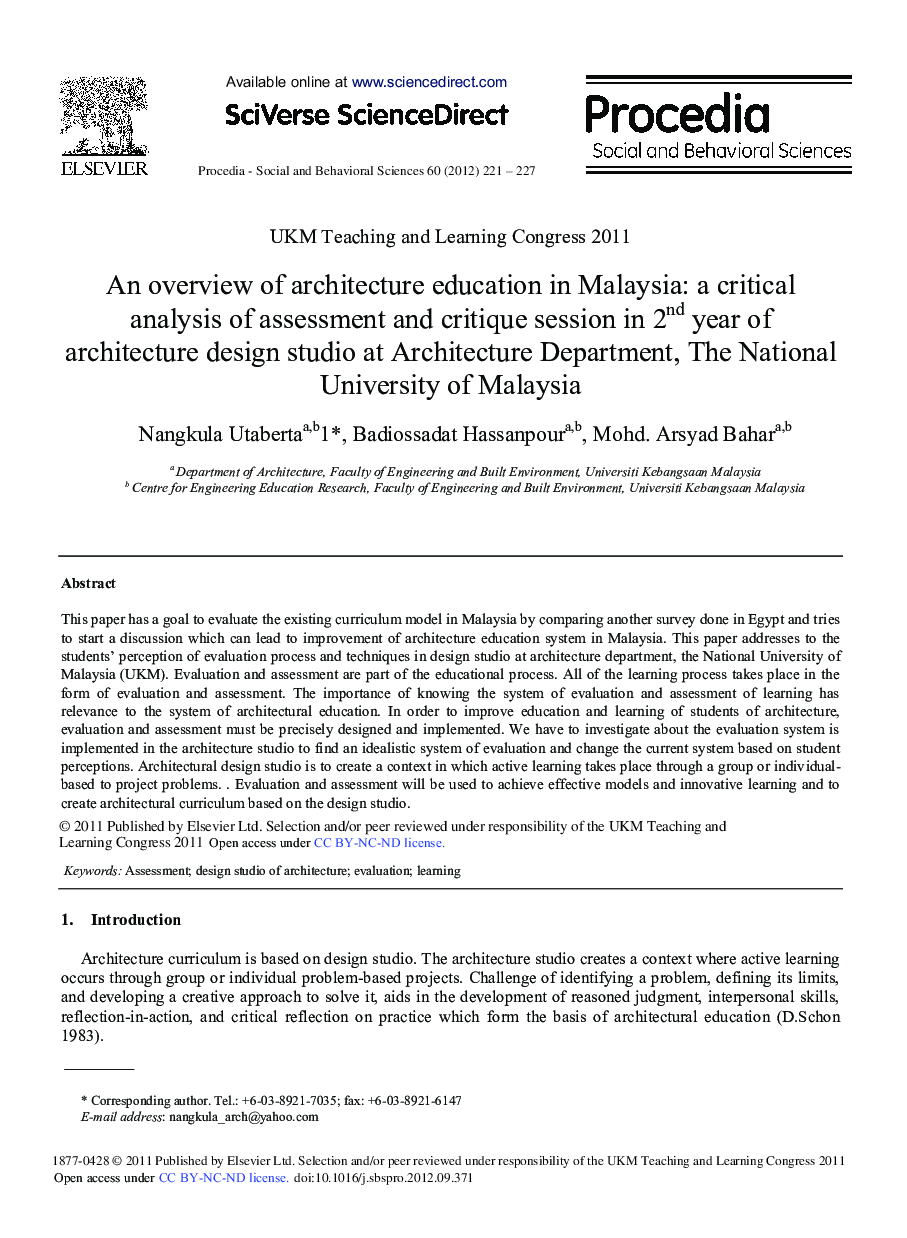| کد مقاله | کد نشریه | سال انتشار | مقاله انگلیسی | نسخه تمام متن |
|---|---|---|---|---|
| 1120164 | 1488499 | 2012 | 7 صفحه PDF | دانلود رایگان |

This paper has a goal to evaluate the existing curriculum model in Malaysia by comparing another survey done in Egypt and tries to start a discussion which can lead to improvement of architecture education system in Malaysia. This paper addresses to the students’ perception of evaluation process and techniques in design studio at architecture department, the National University of Malaysia (UKM). Evaluation and assessment are part of the educational process. All of the learning process takes place in the form of evaluation and assessment. The importance of knowing the system of evaluation and assessment of learning has relevance to the system of architectural education. In order to improve education and learning of students of architecture, evaluation and assessment must be precisely designed and implemented. We have to investigate about the evaluation system is implemented in the architecture studio to find an idealistic system of evaluation and change the current system based on student perceptions. Architectural design studio is to create a context in which active learning takes place through a group or individual based to project problems. Evaluation and assessment will be used to achieve effective models and innovative learning and to create architectural curriculum based on the design studio.
Journal: Procedia - Social and Behavioral Sciences - Volume 60, 17 October 2012, Pages 221-227